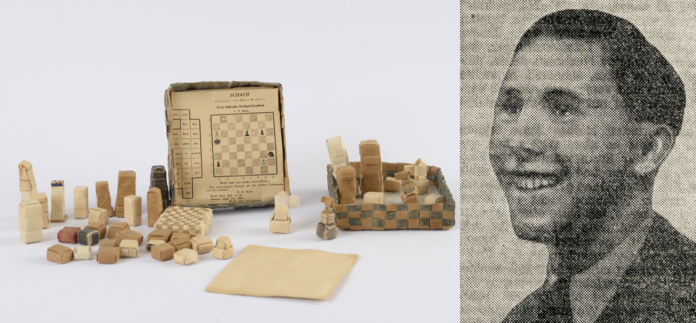On an old fishing boat, posing as a group of innocent boating enthusiasts, Herman Rautenberg from Berlin met with other youths involved in anti-Nazi activities. In spite of being arrested a number of times, Rautenberg was undeterred. In 1937, after he was betrayed by an informant, he was arrested again and sentenced immediately. He was sent to Dachau and a year later to Buchenwald where he was imprisoned for over two years. During his incarceration, Rautenberg made a chess game from bits of paper that he found in the camp.
On 9 November 1939, an announcement came over the loudspeakers: “The prisoners are required to form lines in front of the barracks”. It was the day after the attempt on Hitler’s life by Johann Elser and a “Revenge Aktion” was carried out in the camp. On that morning, the prisoners were not sent to work but were returned to their barracks after roll call. Shortly afterward 21 men, among them Rautenberg, were selected and sent to stand by the gate of the camp. As they waited, the camp doctor was instructed to fill out 21 death certificates. The cause of death noted on the certificates was “killed while escaping”. The prisoners were then marched to the nearby quarry and shot.

Among the personal effects sent to Rautenberg’s mother after his murder was the chess set that he made and a newspaper cutting with chess moves. These items allow us a glimpse of Rautenberg’s resourcefulness in creating a chess set out of paper in his final months as a prisoner. The game enabled him to divert his attention from the loneliness and the harsh reality of his existence.

Source: Yadvashem.org
Donated by Ruth Rappaport, Switzerland















